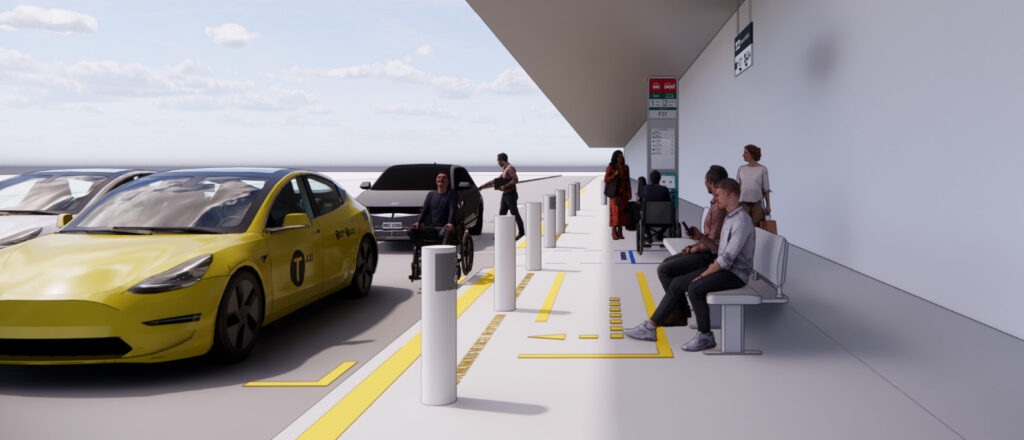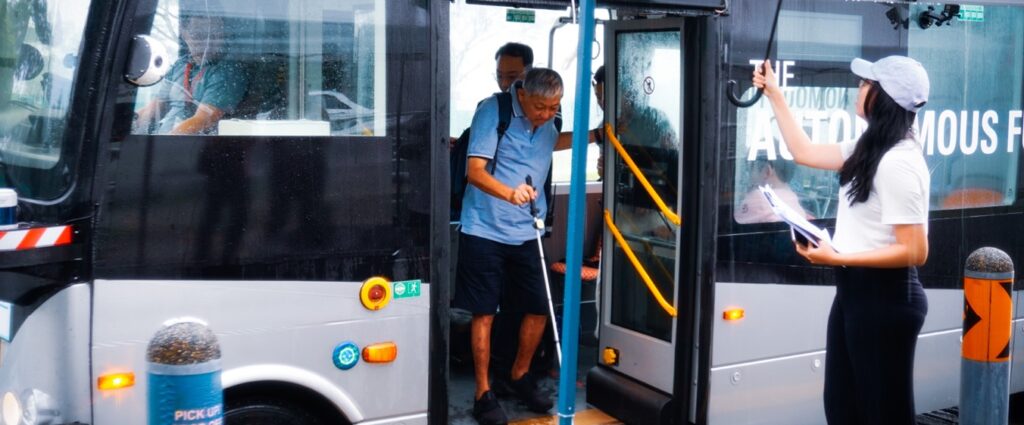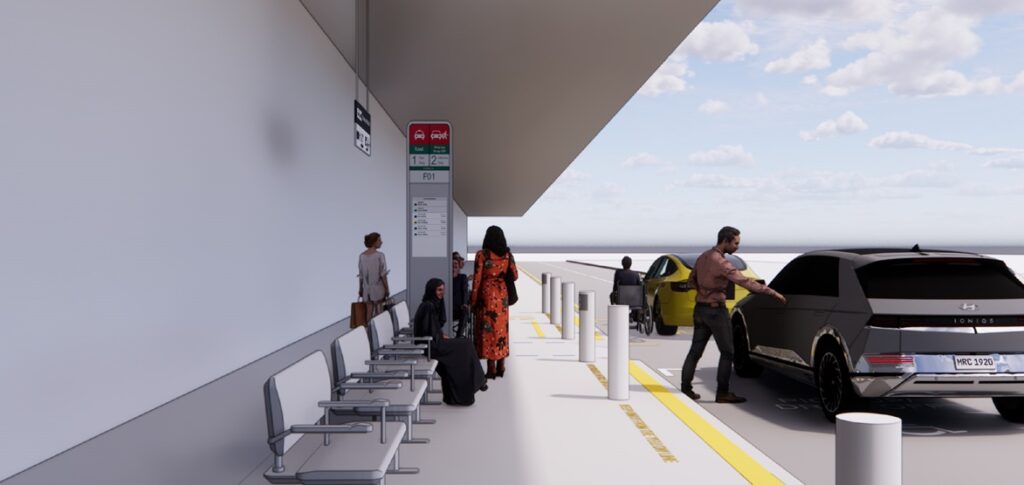About PUDO
2025 and Beyond: Re-defining People-Vehicle Interaction and Infrastructure for Future Mobility in Singapore

The ease of commuting remains one of the touchstones of a vibrant metropolis today. As more people move to live in cities, many developing cities face traffic congestion issues. Autonomous Vehicles (AVs) possess great potential as a mobility solution to enhance the efficiency of traffic flow on roads as they are designed to optimise speed and distance without having to brake unnecessarily.
In the quest of finding the optimal design of pick-up -and-drop-off (PUDO) points for the future of mobility, the TUM Asia’s team of designers and traffic engineers work hand in hand, conducting numerous surveys, feedback sessions, and focus group discussions to develop a set of recommendations ready for future PUDO points and the deployment of AVs in Singapore.
Imagine an alternative future where the roads are cluttered with a motley of vehicles – buses, cars, taxis, private-hire cars, motorbikes, and AVs. Throw morning rush hour into the mix; anyone could tell that this is a recipe for chaos.
How might we design our PUDO points that are not only ready for AVs but also suitable for commuters who come from different walks of life with vastly different needs?
The PUDO team embarked on a two-year journey, to put before Singapore a vision of autonomous vehicles on its roads.

Meaningful placemaking – keeping things inclusive
In many ways, the many constructs of modern society have been cleverly manifested in the design of PUDO points. The team’s role is to rethink the function of every feature – bollards, berths, kerbs and lane markings, wayfinding, etc. – and retrofit the current PUDO points to be AV-ready. The team profiled seven user personas: parent and child, elderly, tourist, student, office worker, visually impaired individual and person in wheelchair. In addition, an array of other interest groups that make up the project consortium ranging from representatives from National University of Singapore, Nanyang Technological University Singapore, ST Engineering, Land Transport Authority, Urban Redevelopment Authority, SG Enable, etc. participated in the feedback sessions.
Using a human-centred design approach, the team identified the needs, pain points, and preferences of each user persona throughout their journey.
Breaking functional fixedness
Different perspectives and needs produce divergent fixedness. One such feature is the bollard. Why do we require a bollard in front of the PUDO? It impedes my movement in getting on the vehicle, a wheelchair user says. Conversely, according to BCA guidelines, the bollards act as a vehicle security barrier, a type of counterterrorism measure and protective measure for commuters.
“The bollard is also used as a point of reference for bus drivers to stop the bus,” the PUDO team added.
While bollards are essential for various reasons, the current finishing materials used on bollards impede the Light Detection and Ranging (LIDAR) sensors of AVs, affecting AVs’ ability to make judgments based on road conditions.
Upon identifying the diverse and often contrasting needs of various users and stakeholders, the PUDO team recommended adding relief markings on bollards not only to provide a safe way for AVs to navigate into PUDO points by eliminating possible dynamic AV challenges but also to guide users to specific waiting points.
Even simple acts of nature can impede the smooth operations of AVs as they are computed to slow down when their sensors pick up obstructions such as vegetation overgrowth past the kerb.
To overcome such challenges, the team has recommended demarcating a buffer zone from the kerb that would not hinder the clarity of traffic flow of the AV into the main carriageway.
Utilising AV: creative ideas as solutions
Defining challenges in conventional ways would naturally lead to conventional solutions and often becomes a stumbling block in finding a breakthrough in the middle of the most hidden problems. Putting the users at the centre of the development solutions often leads to surprising insights and creative solutions. One classic example would be the booking of AVs.
While most service providers would typically include a booking app on mobile phones, the team did not stop there. The team had also recommended installing a booking kiosk to provide an additional way for users to make a booking, which would also provide real-time arrival timings to passengers.
“We ought to consider the constraints faced by such users as parents who find it a challenge to free their hands from carrying multiple stuff on the go or tourists who find it a hassle to download a new booking app. The booking kiosk would enable commuters like tourists or elderly who are less tech-savvy to book AVs easily,” the team added.
Envisioning the future of our PUDO
The envisioned PUDO design is not only a culmination of the needs of every user who require the use of PUDO points but also the fruition of the monumental effort the team has put in to marry the needs, potential challenges and pain points of different users, putting forth a set of design recommendations that is useful and tailored to their needs. Importantly, the final design iteration is a reflection of the needs and behaviour of our population from different backgrounds and the spirit of our community that encourages coexistence and consideration for all who inhabit them.

